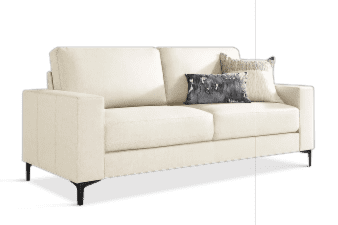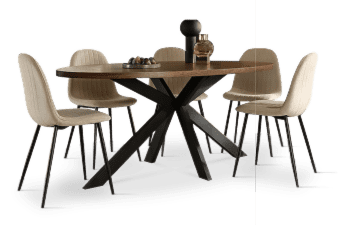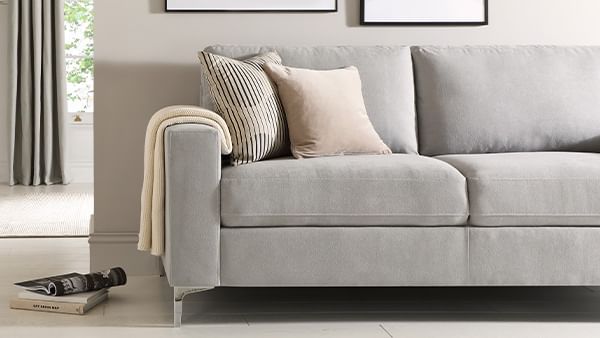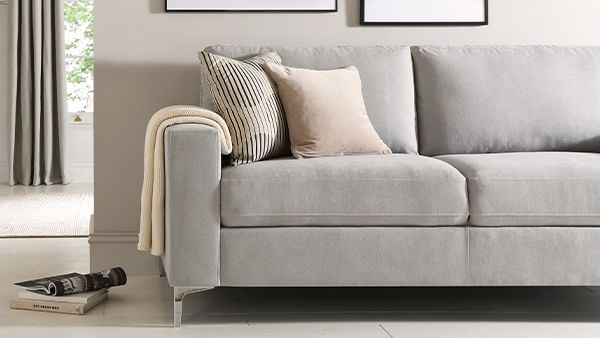The definitive wooden flooring guide
Read on for our handy guide that covers picking wooden flooring, practicality and how different styles will work for you.
With so many wooden flooring options to consider when thinking about what would work for your home, it can be tricky to know where to start. To help you to make a decision about the type of wooden floor that would be best for your home – whether i's one room or several – we'll take you through the different flooring decisions you'll need to make, and weigh up the pros and cons as we go, to give you a definitive guide to wooden flooring.
Lifestyle
Oak, pine, bamboo, birch… These are just a handful of the most popular types of wooden flooring materials available for your home. Each wood is distinctive in look and colour, so before making a decision about which you want to purchase for a specific room, i's worth first taking a look at the furniture you already own to see which type of wood is likely to be the best match.
I's also worth considering how much natural light there is in each room you intend to replace the floor. Lighter woods work well in rooms which do not have access to as much natural light, giving the appearance of a lighter, brighter space. Good-quality artificial lighting will also help to brighten rooms – this is especially important if you're looking to purchase darker wood flooring.
As well as giving your home a modern, stylish look, wooden flooring is a highly practical option. Spillages and dirt on wooden floors can be cleaned far more easily than stains on carpets, and for those with kids or pets, i's even more crucial to have flooring tha's easy to maintain.
Hardness rating
Each type of wood has a hardness rating. This indicates which types of wood flooring are likely to be most prone to scratches and general wear and tear, another consideration to take into account if you have kids or pets. However, this doesn't necessarily mean you should purchase the hardest wooden floors available, as many soft and medium-grade wood floors can be strengthened with polyurethane finishes.
Softer wood such as pine, cherry, teak and birch tend to be cheaper than the hard woods such as oak and maple, for example. Soft wood is also typically easier and quicker to install in your home compared to hard wood, as i's less tricky to drill and saw into for instance.
However if you're willing to pay extra, the finish of hard woods such as oak are unparalleled – chic-looking and incredibly hard-wearing, you're far less likely to need to repair or replace hard wood flooring.
Real wood flooring
Real wood flooring is quite literally made up of planks of wood, as opposed to other forms of wooden flooring manufacturing techniques, which we'll take a look at below. Real wood flooring is usually fitted using the tongue-and-groove method, which done professionally can look seamlessly beautiful. A slightly more pricey option, good quality real wood flooring is nevertheless a popular choice as i's unlikely to need as much maintenance as other wooden flooring options, and it can even add value to your home.
Laminate flooring
Wooden flooring doesn't have to be expensive. A good alternative is high-quality laminate flooring, made from fibreboard and overlaid with a picture of the wood with a laminate covering. Laminate flooring is ideal for bedrooms and living areas, and many retailers also have the flooring available for your bathroom and kitchen too – but remember to check with the supplier first, as not all laminate flooring has a waterproof core or a guarantee that i's fit for purpose in these rooms.
A huge advantage of having laminate flooring is the click-lock installation process, which is a relatively straightforward and less time-consuming method of laying down wood flooring.
Engineered wood flooring
Another alternative is engineered wood flooring. Each plank is composed of several layers of wood welded together to form a strong flooring solution, which is practical for most areas of your home. Again, i's important to take note of the manufacturer's guarantee, as generally engineered wood is not suitable in rooms prone to humid or wet conditions.
An otherwise versatile option however, engineered wood has a top layer of veneer which can be sanded down to the original finish – which comes in handy particularly if your flooring receives plenty of wear and tear.
Painting floors
Painting your wooden floor is a great idea if you're keen to add a fresh touch to a room, or cover up small-scale damage. There are a few practicalities to be aware of however, before you – or your decorator – make a start. Remember that you won't be able to paint your wooden floor unless you prepare your floor correctly.
Real wood flooring free of varnish or paint will need to be thoroughly cleaned, and any gaps between planks removed using wood filler. You should then sand the planks to give the floor an even, smooth surface before you begin painting.
Painted wooden floors require a little extra work if you're looking to repaint them. Old paint must be removed where possible and then sanded before paint work can begin. Varnished wooden flooring will similarly need to be stripped of the varnish finish, and then the same method as that recommended for painted floors can be adopted. Be aware that paint may not be appropriate for waxed and polished floors, so i's worth checking with the paint manufacturer first.
Repairing floors
Wear and tear to wooden floors is a normal occurrence, and difficult to avoid! Some repairs you may be able to carry out yourself, for example small scratches can be scoured and buffed away using steel wool. For larger, more obvious scratches you'll typically need to sand and refinish the floor. Depending upon the type of finish on your wooden flooring, specialist transparent or brown-toned wax can also be used to help fill scratches and dents.
When it comes to water damage, you won't always be able to treat it yourself. Planks that are rotting are best removed and replaced by a professional, as if you're not experienced it can prove difficult to cut out the damaged section of flooring and find a matching replacement.
However, if the water damage is not severe – for example if there's a water ring mark – you may be able to solve the problem yourself. First sand the area of damaged wood, ensure it is clean and dry, and apply a little bleach to make the stain appear lighter before sanding again. Find a stain colour to match your wooden flooring, and if possible apply a little on an offcut of your wooden floor, before gently applying the stain to your floor.
Wooden flooring can be a stylish and practical floor solution for virtually any home. Take your time to assess your budget and lifestyle before deciding which type of wooden flooring best suits your needs, and you'll have the perfect floor to complement your home in no time.





